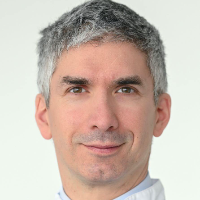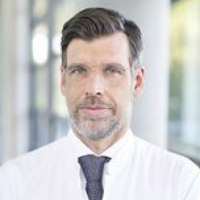Ophthalmology – treatment in the Best Hospitals
Here you will find most technologically advanced ophthalmological hospitals in the world
Focus of treatment:
- Acute glaucoma
- Blocked tear duct
- Cataract
- Congenital glaucoma
- Congenital lid nevus
- Conjunctival adhesions
- Cornea detachment
- Corneal damage
- Corneal opacity or corneal dystrophy
- Diabetic retinopathy
- Ectropion eye
- Eye cancer
- Eye vessels occlusion
- Glaucoma
- Glaucoma combined with cataract
- Keratoconus
- Macular degeneration
- Macular edema
- Myopia
- Nystagmus, strabismus
- Ophthalmitis caused by sjogrens syndrome
- Optic nerve atrophy (ONA)
- Retina degeneration
- Retinal detachment
- Retinoblastoma
- Scleritis
- Traumatic injury of eyeball
- Vitreous degeneration
- Vitreous haze Show more

Department of Adult and Pediatric Ophthalmology
The Department of Adult and Pediatric Ophthalmology offers the full range of modern diagnostic and therapeutic services in the field of its expertise. The department deals with the treatment of all pathologies of the anterior and posterior segment of the eye. Special attention is paid to operations on the retina, vitreous body



Department of Ophthalmology
The Department of Ophthalmology offers the full range of diagnostic and therapeutic services for patients with diseases of the eye and its appendages. The department’s specialists use cutting-edge laser systems in their work, which can improve or maintain vision even in the most difficult clinical situations. The diagnosti


Department of Adult and Pediatric Ophthalmology
The Department of Adult and Pediatric Ophthalmology offers modern diagnostics and treatment of diseases of the eye and its appendages. The main areas of the department's clinical activity include cataract surgery, vitreoretinal surgery, and the treatment of glaucoma, age-related macular degeneration, diabetic retinopathy, an





Ophthalmology abroad is a suitable option for people who need advanced or novel treatment, as well as for those who are diagnosed with rare pathologies or can’t be diagnosed at all. Ophthalmologists abroad carry out advanced eye examinations with detailed visualization of all its structures, registration of visual evoked potentials, biopsy, etc. Based on the detected pathology, the doctors use medications, minimally invasive, and open interventions up to the damaged optic nerve restoration and artificial retina implantation. They manage to find an effective therapeutic option for each person.
Content
- Treatment of refractive errors
- Treatment of cataracts and glaucoma
- Treatment of eye tumors
- Leading hospitals and prices for treatment
The ophthalmic diseases are treated with novel medications, laser and minimally invasive surgeries (e.g. LASIK, LASEK, SMILE, etc.), implantation of intraocular lenses and artificial retina, stem cell therapy. The treatment scheme is always elaborated individually.
Currently, the leading hospitals are University Hospital Rechts der Isar in Munich, Helios Hospital Berlin-Buch, and University Hospital Ulm. You can choose a suitable hospital on the Booking Health website.
If you want to visit an ophthalmological hospital abroad, contact the international medical tourism provider Booking Health. Specialists will recommend a hospital and a doctor, treatment method; make an appointment; help with receiving a visa, booking tickets and accommodation, transfer; provide you with an interpreter and take care of medical reports translation.
Treatment of refractive errors
In people with refractive errors images are not focused sharply on the retina, as the cornea or the lens have an abnormal shape or transparency. This pathology group includes myopia (nearsightedness), hyperopia (farsightedness), astigmatism, presbyopia, and anisometropia. The simplest way to correct them is to use eyeglasses or contact lenses. However, some patients still need more invasive eye treatment, i.e., refractive surgery.
Corneal refractive surgery restores the physiological curvature of the cornea, so that light rays and images are focused on the retina again. Depending on the results of diagnostics, ophthalmologists choose one of the following interventions:
- Laser in situ keratomileusis (LASIK)
- Epi-LASIK
- Laser epithelial keratomileusis (LASEK)
- Photorefractive keratectomy (PRK)
- Small incision lenticule extraction (SMILE)
- Corneal inlays
- Phakic intraocular lenses (IOL)
- Intracorneal ring segments (INTACS)
- Clear lensectomy
- Radial keratotomy
- Astigmatic keratotomy
After surgical treatment, over 95% of patients will never need to use eyeglasses or contact lenses again.
Treatment of cataracts and glaucoma
Although cataracts and glaucoma are different pathologies with different pathogenetic mechanisms, they are somewhat common in terms of therapeutic strategy. A cataract is a clouding of the eye lens that finally makes it impenetrable to light rays. Glaucoma is a group of pathologies that cause the fluid pressure to rise inside the eyeball; left untreated, glaucoma leads to the degeneration of the optic nerve or retina and blindness.
First, both cataract and glaucoma are treated with medications – systematic and long-term administration of eye drops. In case of poor efficacy, doctors proceed with surgical treatment: implantation of artificial intraocular lenses (IOL) in cataracts; trabeculotomy, viscocanalostomy, deep sclerectomy, and trabecular stent bypass in glaucoma. Laser treatments are also used, such as laser trabeculoplasty, cyclodiode laser treatment, and laser iridotomy.
Glaucoma can also be congenital and diagnosed even in infants. It is a genetically-determined condition that requires surgery. Angle surgery is the first-line option in this case.
If glaucoma leads to the development of optic nerve atrophy, a patient suffers from progressive vision loss up to total blindness. The most efficient intervention, in this case, is stem cell therapy that restores the damaged nerve.
Treatment of eye tumors
Eye cancer is a challenging pathology that requires special skills and extensive clinical experience. There are several types of eye tumors, each of which has certain peculiarities:
- Eye melanoma
- Retinoblastoma
- Squamous cell carcinoma
Eye melanoma is a tumor from pigment-producing cells. Treatment is carried out by a tumor board, as different therapeutic options are used. Small melanomas can be removed with the help of lasers (e.g., transpupillary thermotherapy, laser coagulation), while bigger ones require surgery in combination with radiation therapy and topical chemotherapy. Hospitals abroad demonstrate the highest success rates in the treatment of this pathology.
Retinoblastoma is diagnosed in children. The pathology can be heritable or inheritable, which is determined with the help of genetic tests. Regardless of the origin, retinoblastoma requires one or several of the following interventions:
- Cryotherapy, thermotherapy
- Chemotherapy, including a high-dose one
- Radiation therapy
- Surgery (enucleation)
- Targeted therapy
Squamous cell carcinoma is the most widespread malignancy of the conjunctiva. Fortunately, local therapy is often enough. Carefully performed, local excision of a tumor with supplemental cryotherapy leads to the total cure. Additional administration of antibiotic and corticosteroid eye drops may facilitate recovery.
Leading hospitals and prices for treatment
Treatment of eye diseases is carried out in the Departments of Ophthalmology of the large multidisciplinary hospitals and smaller specialized medical centers. Both options have their advantages: multidisciplinary hospitals offer coordinated work of different healthcare professionals; medical innovations, and participation in clinical trials; smaller centers may have more experience in the specific eye pathologies treatment.
Currently, the list of leading hospitals for eye care includes:
- University Hospital Rechts der Isar Munich
- Helios Hospital Berlin-Buch
- University Hospital Ulm
- University Hospital Frankfurt-am-Main
- Charite University Hospital Berlin
The ophthalmological clinics abroad update equipment annually, and doctors regularly improve their skills. Most departments are also keen on pediatric ophthalmology, including the treatment of infants.
In Germany, price policy is regulated by legislation. The DRG (Diagnosis Related Groups) pricing system considers the main and concomitant diagnoses, a patient's age, therapeutic interventions, etc. If you need to know the cost of treatment in advance, you can find it on the Booking Health website.
Authors:
The article was edited by medical experts, board-certified doctors Dr. Nadezhda Ivanisova and Dr. Vadim Zhiliuk. For the treatment of the conditions referred to in the article, you must consult a doctor; the information in the article is not intended for self-medication!
Sources:

